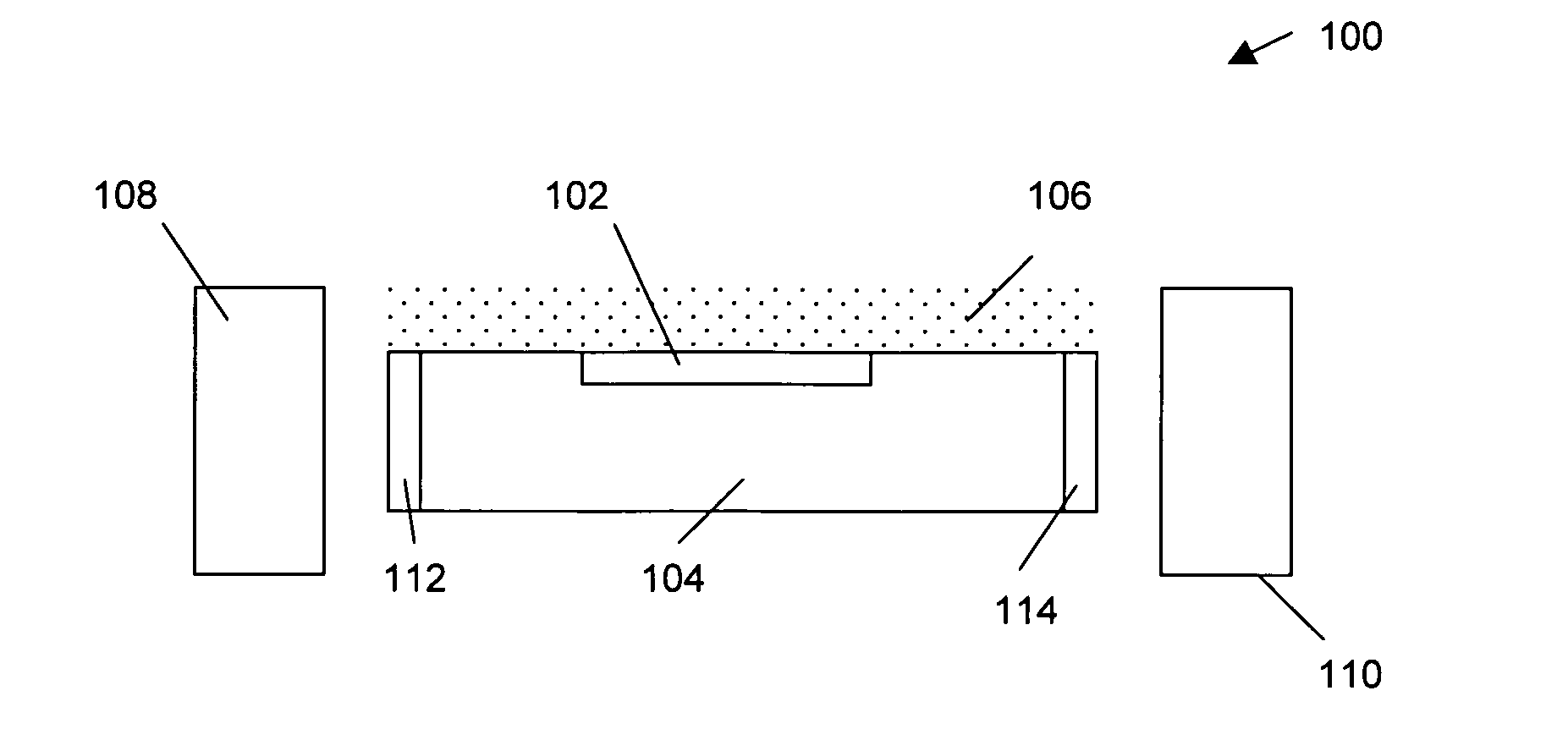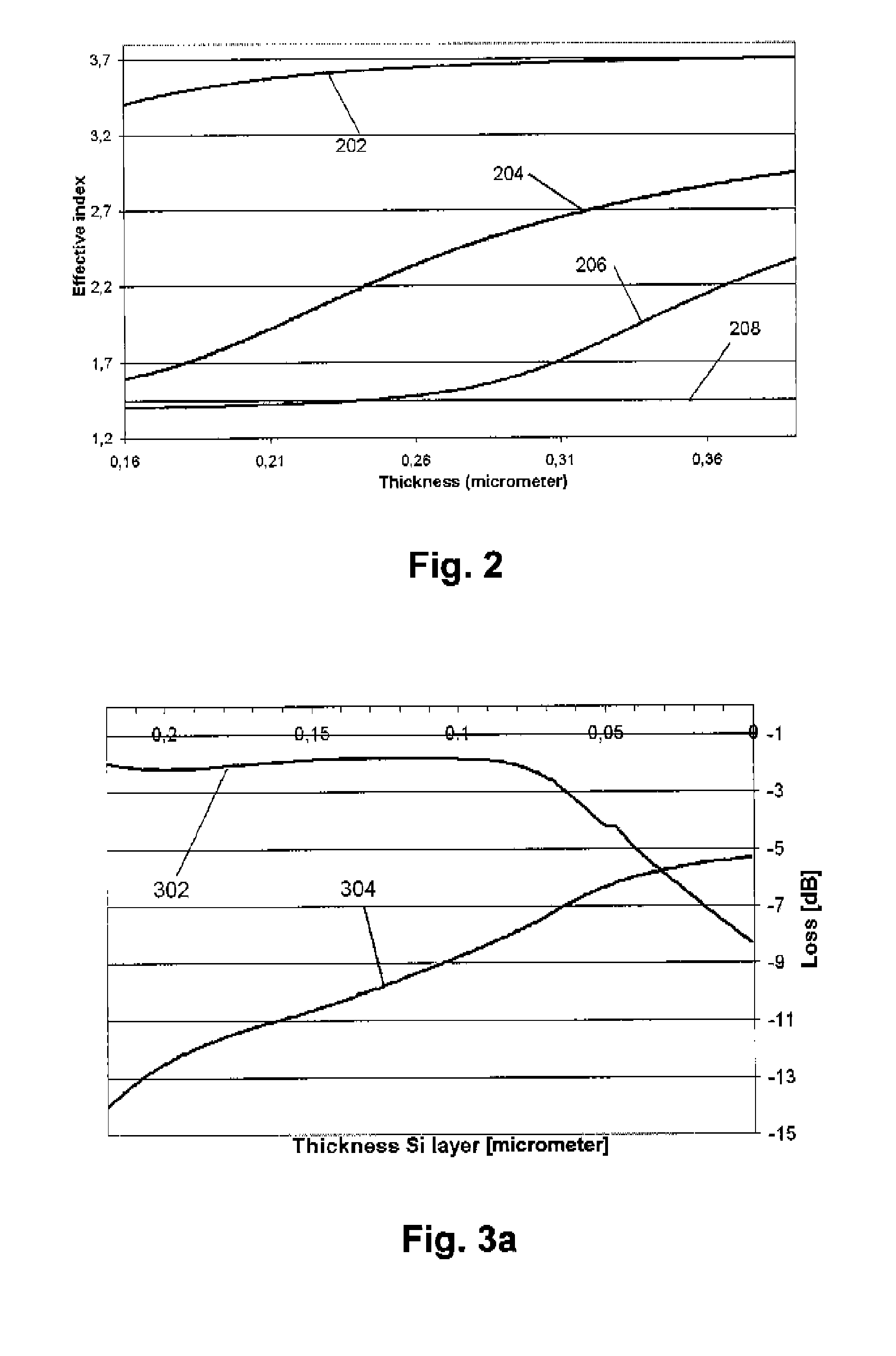Integrated surface mode biosensor
a biosensor and integrated technology, applied in the field of biological, biochemical or chemical sensing and/or particle detection, can solve the problems of very lossy waveguide mode, and achieve the effects of high tuneability, high integration, and high optical sensitiveness
- Summary
- Abstract
- Description
- Claims
- Application Information
AI Technical Summary
Benefits of technology
Problems solved by technology
Method used
Image
Examples
example 1
[0082]In a first example, a comparison is shown between an experimental result and simulation result for a system wherein a 5 μm strip of a gold layer is used. The strip is provided by etching in a silicon substrate with a depth of 80.62 nm and by providing a gold layer with a thickness of 49.74 nm. Measurements are performed in plain air. In FIG. 9a and 9b a comparison of the measured and calculated transmission as function of wavelength is shown. A good qualitative agreement can be seen between the measured and simulated results. The discrepancy between the results may be due to the fact that the etch process is not optimised for the silicon substrate used and the fact that small variations in the thickness and roughness of the gold layer may be present. The relative large measured losses are due to the roughness of the etching and the consequent roughness of the deposited gold layer.
[0083]A plurality of examples is provided illustrating simulated results obtainable with a Mach-Ze...
example 2
[0084]Example 2 illustrates simulated results obtainable with a Mach-Zehnder Surface Plasmon interferometer using a sensor having a silicon-on-insulator (SOI) substrate with an embedded gold (Au) layer. The parameters of the different components of the input wave guide structure and sensing wave guide structure used in the simulation, as well as the length of the sensing section are indicated in table 1.
TABLE 1Thickness (μm)MaterialnInput waveguide:substrate4.0Si3.45buried oxide2.0SiO21.45core0.22Si3.45cladding5H2O1.33Sensing waveguide:substrate4.0Si3.45buried oxide2.0SiO21.45core0.135Si3.45metal layer0.060AuFIG. 8a, 8bcladding5H2O1.33length sensing section8.639μm
FIG. 10a illustrates the obtained transmission spectrum through the structure, indicated in dB, as function of the wavelength, indicated in μm. A clear destructive interference peak can be seen in the spectrum around 1550 nm.
example 3
[0085]Example 3 illustrates a simulated result for a system as shown in the second example, whereby the Si core has a thickness of 0.129 μm, the cladding is 5 μm thick and comprises air (refractive index 1) and the length of the sensing section is 13.145 μm. The latter allows to illustrate the effect of changing the length of the sensing section and the cladding material, resulting in a transmission spectrum as shown in FIG. 10b. In other words, the device can be adapted and / or optimised for sensing in a different media. In the present example, the device is adapted for sensing in air media, more than in aqueous environments. The length of the sensing sections used depends on the material system and the refractive index at which the interference minimum is to be detected as is explained above. As a refractive index of 1 is used instead of 1.33 in the previous examples, a different sensing length is applied.
PUM
 Login to View More
Login to View More Abstract
Description
Claims
Application Information
 Login to View More
Login to View More - R&D
- Intellectual Property
- Life Sciences
- Materials
- Tech Scout
- Unparalleled Data Quality
- Higher Quality Content
- 60% Fewer Hallucinations
Browse by: Latest US Patents, China's latest patents, Technical Efficacy Thesaurus, Application Domain, Technology Topic, Popular Technical Reports.
© 2025 PatSnap. All rights reserved.Legal|Privacy policy|Modern Slavery Act Transparency Statement|Sitemap|About US| Contact US: help@patsnap.com



